Columbus Day, what better day to recall the story about Mark Twain and his prankster pals hoodwinking an Italian tourist guide, who believed American travelers wanted to know the tiniest tidbit about “Christo Columbo.”
When the guide proudly displayed a document written by Columbus, Twain and his mischievous buddies made clear that they “had seen boys in America only fourteen years old who could write better.” They asked innocently whether Columbus was dead.
Columbus Day, a day for celebrating Genoa’s famous explorer, was also an occasion for me to explore in New York City the story of my great-grandfather, born near Genoa. I wanted to complete my 45-year search for Angelo Francesco Ghiglione, who arrived from Italy in New York as an indentured pasta maker in 1872.
Before long he was operating his own mom-and-pop pasta manufacturing company at 195 Lewis Street on the Lower East Side of Manhattan, bringing two sons into the family business, encouraging the third son to get a medical degree from Columbia University and moving from a nearby tenement on East Sixth Street to the suburbs—a house in an Italian-American section of Staten Island.
The search for my great-grandfather had begun in 1966, my last year in law school, when my father, 51, died of cancer, leaving three relatives—my stepmother, her mother, and my grandfather—to share our tiny New York City apartment. A sheet hung ceiling to floor converted one bedroom into two closet-sized bedrooms.
So I invited Grandpa Frank to come to Washington D.C. after my graduation from law school to live with me.
Grandpa, 88, and I, 26, were the oddest of odd couples. I was focused on the present and future—on learning as a Congressional Fellow how the House and Senate worked and on figuring out how to achieve, someday soon I hoped, my dream of putting out my own newspaper.
Grandpa concentrated on the past. He recalled succeeding his father as president of A. F. Ghiglione & Sons, a New York, then Seattle, pasta manufacturer, and later working, until age 75, at International Wines in Jersey City, N.J., for my father. If angered when we argued he would threaten to return to Seattle or San Francisco.
I, the knee-jerk liberal, and he, the far-from-politically-correct conservative, argued about almost everything, even how to wash dishes. We lived in a small house on 10th St., S.E., in a predominantly black neighborhood being gentrified by whites, many of whom were gay. He dismissed our neighbors with an enthusiasm previously reserved for southern Italians, whom he saw as (I have abbreviated the list of encomiums) lazy and lower-class, stupid and stiletto-wielding.
His enlarged heart had given him the reputation since childhood of being sickly. “We were always told, ‘Uncle Frank is coming over and you must be very quiet,’” cousin Marie Wilham, recalled. “We all thought Uncle was going to fall over to any moment.”
True, when he took his morning walk with Dante Alighieri Ghiglione, his brown-and-black dachshund puppy, he walked with a tilt. His rightward lean, physical as well as political, made it appear that he might collapse any minute. But he was a feisty featherweight—5’6”, 125 pounds—who seemed to thrive on our verbal jousting and a daily routine that rarely varied.
After returning from his morning walk, he spread the New York Times, then the Washington Post, flat on the dining-area table and spent most of the day, with a break for lunch, reading the newspapers, drinking a Budweiser six-pack and, if I were home, barking one-sentence assessments of politicians in that day’s news (President Lyndon Johnson, he said, was “another Hitler”).
One day I returned from Senator Robert Kennedy’s office to find Grandpa lying diagonally across the living room sofa, his left foot still touching the floor. A fly landed on his upper lip. He did not move his hand to brush it away. I knew Grandpa was dead.
Later, when I went through his belongings, I came across two century-old documents, written in Italian. A simple note of recommendation, signed by Angelo Cavero in elementary-school-style penmanship, as if he were writing his name for the first time, attested to my great-grandfather’s good work for him from Sept. 14, 1865, to July 11, 1868, interrupted only by Angelo Francesco Ghiglione’s service during the third Italian war of independence in 1866 (Italy, allied with Prussia, wrested from Austria the province of Venezia).
While I could translate the brief note of recommendation with the help of an English-Italian dictionary, the second document, 3 ½ pages in the most baroque of hands, proved impenetrable. Claudio Capasso, a family friend, succeeded where I had failed, attaching a note: “Please find herein the translation of the contract signed in 1872 by an honest and skilled Italian victim and his Yankee butcher.”
The contract detailed my great-grandfather’s indenture to Uffreduzzi and Dart of New York. They would pay his passage from Genoa to New York. He, in turn, would work in their New York factory making Italian-style noodles for three years, a minimum of 72 hours a week, at 17 cents an hour plus “appropriate quarters without linen.” To guarantee that my great-grandfather remained at his job three years, Uffreduzzi and Dart would deduct $1 from his pay each week. If he left the firm early he would lose the money.
My great-grandfather and others making the voyage from Genoa to New York were swindled at both ends. In Genoa, dishonest hotel owners, restaurateurs and emigration agents duped those leaving Italy. Agents circulated handbills promising work and wealth, “multiplying wages a hundred-fold.”
Usually unable to pay for passage, the immigrants would raise 15 percent of their tickets in advance and, often illiterate, sign over to an emigration agent security on whatever they owned. Within a year the emigration agent collected the remainder of the cost of the tickets or the houses, farms or other properties of the immigrants.
My great-grandfather’s indenture contract hooked me on trying to find out why he had left Italy and signed up with Uffreduzzi and Dart. I thought grandly about playing history detective—discovering the story of my great-grandfather, the first Ghiglione in America, to learn not only about my identity but also the identity of America.
A microfilmed ship’s passenger list at the National Archives in Washington, D.C., revealed that my 28-year-old great-grandfather had arrived in New York from Liverpool on March 28, 1872, aboard the Inman Line steamer RMS City of London.
That nine-year-old, 2,550-ton ship symbolized the development and danger of immigrants’ travel. By 1870, the City of London and other Inman ships were landing 44,000 passengers a year in New York, more than any other company. On my great-grandfather’s 1872 voyage 816 immigrants survived steerage (a one-year-old French girl died of “debility”). On a trip from London to New York in November 1881, the City of London sunk. All of its crew and passengers died.
In 1979 I traveled to Pontedecimo, an industrial town north of Genoa, Italy, to continue the search for my great-grandfather. I met with Father Giuseppe Risso, the parish priest at nearby St. Cipriano Serra Riccò, a church dating from 1000 A.D. that sat on a cliff overlooking Pontedecimo 500 feet below. I arrived at the church a little before noon. Even before the mother of Father Risso opened the rectory door I could smell the cooking pasta that would be the centerpiece of the priest’s lunch.
I was ushered down a narrow, thirty-foot corridor to a back room where, at a desk weighted with stacks of papers, sat Father Risso. A native of Genoa who had served St. Cipriano for 24 years, he wore an old black cassock, the frayed collar recently sewn with heavy black thread. He brought out a leather-bound birth-and-baptism book and pointed to a page of faded brown script.
The page contained the birth record for Angelo Maria Francesco Ghiglione, son of Benedetto, a weaver, and Maria Cambiaso Ghiglione, listed as “atta ai lavori di casa” (someone who is able to do housework). The paper was signed by a priest, Carrozzo Giambattista, because my great-grandfather’s father, Benedetto, could not write his own name.
That my great-grandfather came from working-class stock confused me. Ghigliones in the United States had told me tales of their ancestors being “aristocratic people,” “one of the three pioneer families of Genoa,” and “counts and countesses.” A second cousin recalled visiting Ghigliones in their elegant Pontedecimo home, viewing an 18th-century painting of a Ghiglione who looked like the Ghigliones in America, and being served tea by the Ghigliones’ staff.
So on a return visit to Pontedecimo in 2009 I visited poet and town historian Antonio Canepa in his tiny apartment, crammed with 5,000 pieces of art, from a dozen figurines of neighborhood people to what he called a three-million-year-old piece of coral. Canepa, 75, who resembled a solid block—5’7”, 200 pounds, square jaw covered with bristly beard, black eyebrows, white hair combed straight back—said, “My mother was a Ghiglione.”
He talked about Ghigliones from Pontedecimo’s past—furniture makers Luigi, Francesco and Vittorio, friar Attilio (“Padre Generoso”), a chaplain for the anti-fascists during World War II, and well-to-do Zim Gemma, who made expensive round pasta, corzetto stampato, decorated with flower or vegetable motifs, a cross or a coat of arms. This kind of pasta, dating from the 13th century, helped make Ligurian pasta among the most sought after internationally.
Why had the Ghigliones and other families left Pontedecimo? “Because they were poor,” Canepa said. He told of three family members who went to the United States, “made a lot of money,” and returned home. “The bankers robbed them blind,” he said. “They were poor again.”
So this Columbus Day week Alyssa, Dan and I traveled east from Washington Square at the base of Fifth Avenue, through the collegiate community of Cooper Union (where Twain once spoke), past St. Mark’s Place of the hip, happening East Village, to East Sixth Street, a constantly changing street.
East Sixth Street in the 1840s and 1850s was part of Little Germany. The street then became home to newly arrived Italians, Irish and Eastern European Jews in the late 19th and early 20th century, featuring red-light residences and slum tenements with no running water.
In the 1970s, when I visited East Sixth for the first time, the street had become home to other ethnic groups. Indian restaurants dominated the street between 1st and 2nd Avenues. To the east, in the alphabet city of Avenues A, B, C and D, East Sixth Street alternated between Puerto Rican storefront churches and social clubs and unlit, empty buildings and litter-strewn lots.
The street looked like a war zone of bombed-out buildings, except for a a row of Italian-language shops, including “Farmacia Italiana.” The shops turned out to be part of a movie set for The Godfather Part 2. At the 9th Precinct police station on East Fifth Street, a row of seven framed photos of officers killed in action between 1964 and 1975, proved that the real neighborhood, infested by drug dealers and gangs, was as deadly as the make-believe Mafia-controlled neighborhood of the movie.
Myrna Megron, 9th Precinct police station receptionist for 25 years and neighborhood resident for 56 years, said that police officers in 2011 die of “accidents and stuff,” not shootings. Pocket parks (including “Creative Little Garden” with waterfall, trellis benches, swing and fountain) have replaced the litter-filled lots.
The gentrification of East Sixth Street is matched by a new diversity. Peruvian, Mexican, Thai, Ethiopian, Argentinian, Vietnamese, Indian, Chinese, Japanese and Moroccan restaurants share the street with 10 Indian restaurants. To the east, Chinese-language business signs now compete with Spanish-language signs.
But most dramatic is the upgrade in housing. Tax photos, circa. 1940, show the kind of tenement buildings near the East River that my great-grandfather and his family occupied during his first generation in New York. A typical building crammed four 200-plus-sq.-ft. apartments to a floor with a common toilet in the back hall. In the late 1880s the city passed a law requiring a window for every bedroom. But the law did not specify the window had to face outside. So crafty landlords added an interior window between rooms.
By the 1900 census my great-grandparents had achieved the nice-home part of the American dream, moving in less than a generation from Lower East Side tenement to Staten Island single-family house.
I had few clues as to where to find that house: a small painting of a corner-lot three-story house; a faded photo of a two-story gingerbread (scrawled on the back “The Ghiglione Home, Staten Island”); a 1900 census address of Richmond Ave. (no street number); references in city directories to the family living in two Italian-American neighborhoods; a vague memory of taking my grandfather, following my father’s death in 1966, to see his childhood home on Staten Island.
I took a free, 25-minute ferry ride from lower Manhattan to Staten Island and grabbed a United Cars taxi driven by Roger’s Effehi, 51, who came to the United States from Nigeria 13 years earlier. The ferry and taxi rides told the story of the island’s transformation.
Named after Gaetano Victor “Guy” Molinari (Staten Island borough president, 1990-2001), the ferry represented the island’s past and present: 80 percent white and heavily Italian-American, from the first European to visit the island, Giovanni da Verrazzano in 1524, to its current population (the county reportedly has the highest concentration of Italian-Americans of any in the nation).
Effehi symbolized the new Staten Island—increasingly populated by people of color from Asia, Latin America, Mexico, Nigeria, Liberia and other West African countries.
We sped past the stadium for the Staten Island Yankees and Port Richmond (a neighborhood of “very, very hardworking” Mexicans, Effehi said) to reach Arrochar and Rosebank, the two Italian-American communities listed in city directories for the Ghigliones, and Richmond Avenue.
We drove the length of Richmond Avenue and, at its end, talked to long-time residents. They told of old homes being demolished and vacant lots and forests being replaced by new housing after construction of the Verrazzano-Narrows Bridge and other Staten Island bridges. Staten Island’s population, about 225,000 when I visited with Grandpa in the 1960s, had more than doubled to 468,730.
So I never found the Ghiglione’s Staten Island home, if it still exists. But I found the new America.
Loren Ghiglione




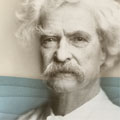
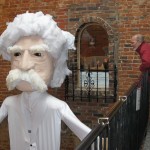
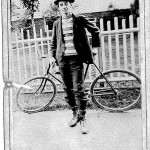

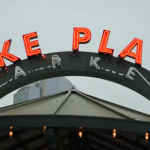

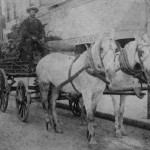

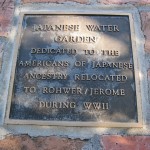
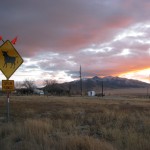
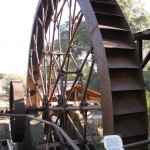
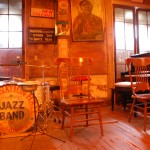

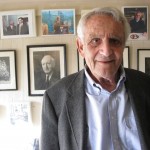
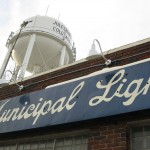

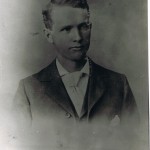


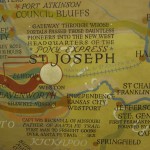


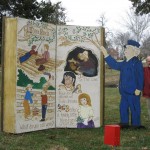

Pingback: Mystery on Staten Island – Traveling with Twain